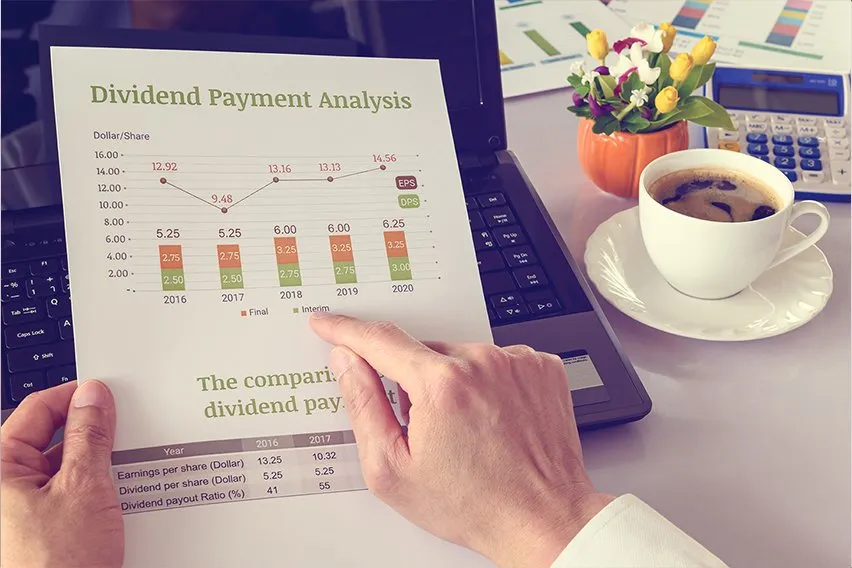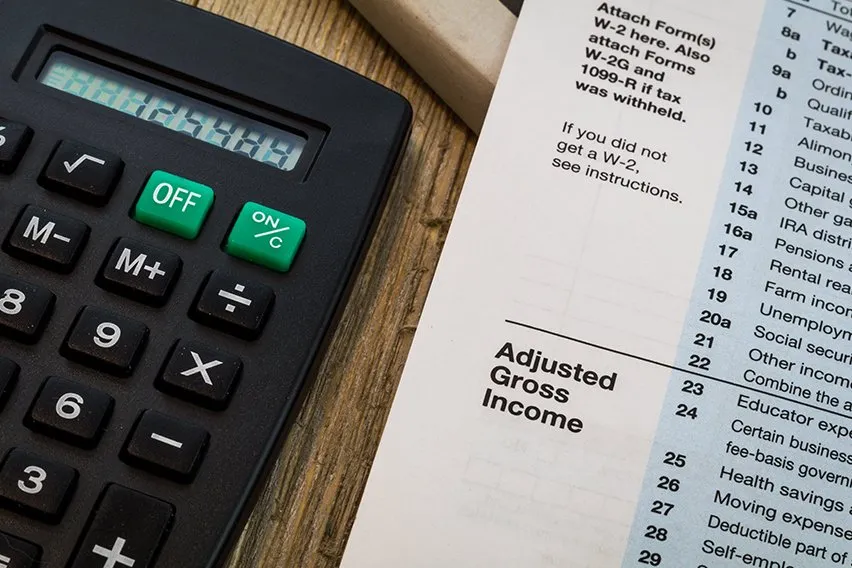What Are Micro Entity Accounts?

Micro-entity accounts are the filing requirements for micro-entity, private limited companies. They are abridged accounts which require less detail than small, medium and large companies’ accounts – which means less time on paperwork for you.
You can also access other benefits that are only available to micro-entity businesses.
Find out if you’re a micro-entity company and how this status can benefit your business.
Here’s What We’ll Cover:
Definition of a Micro-Entity Company
How Do Micro-Entity Accounts Work?
Are There Any Companies That Can’t Submit Micro-Entity Accounts?
Do I Need to Re-Qualify as a Micro-Entity Every Year?
How Do I File Micro-Entity Accounts?
Registration With Companies House
How Do I Link Up My Accountancy Software?
What Are the Pros and Cons of Filing Micro-Entity Accounts?
Definition of a Micro-Entity Company
If you have a very small company and meet two of these thresholds, you’ll be classified as a micro-entity:
- You have a maximum of 10 employees
- Your balance sheet is a maximum of £316,000
- Your turnover is no more than £632,000

How Do Micro-Entity Accounts Work?
From an accounting perspective, businesses fall into three broad categories according to their size: small, medium and large. Micro-entities’ accounts are a subcategory with a specific definition.
If you’ve met two of the three criteria for being a micro-entity company, you can prepare and submit abridged micro-entity accounts.
Micro-entities don’t have to submit their profit and loss account, or their directors’ report, to Companies House. But you still have to meet the correct financial reporting requirements. Leveraging advanced financial reporting software can simplify this process. You have to include a statement to confirm that you have filed annual accounts within the Small Companies regulations, and that your profit and loss information is deliberately not attached.
The statutory accounts for micro-entities must include:
- Directors’ report
- Abridged balance sheet, in a format that’s given in the regulations, footnotes included. Some main headings, like Debtors and Creditors, are missed out
- Simpler profit and loss account, in an abridged format that follows regulatory requirements. This doesn’t start from your turnover, but from your gross profit
- Relevant notes for the accounting period
- Auditors’ report – unless exempt
Additionally, your balance sheet must contain the following statement:
“The accounts have been prepared in accordance with the micro-entity provisions.”
It must be clearly placed before the director’s printed name and signature. It’s important that you make sure this statement is in a prominent position. This must be in your original accounts, not just the copy sent to Companies House.
Are There Any Companies That Can’t Submit Micro-Entity Accounts?
There are several types of companies that aren’t allowed to submit micro-entity accounts. This applies if your business was defined this way at any point during the financial year, not just at time of submission.
These company structures are not allowed to file micro-entity accounts:
- Public limited company
- Company based overseas
- Limited Liability partnership
- Qualifying partnership, as Partnership (Accounts) Regulations 2008
- Unregistered company
- Charitable company
- Company excluded according to section 384 or 384B of 2006 Companies Act
- Company authorised to register under 2006 Companies Act, section 1040
Do I Need to Re-Qualify as a Micro-Entity Every Year?
During your first year in business, you’ll qualify as a micro-entity if you meet the criteria in that year. To remain in this classification in subsequent years, you must meet the criteria in the current financial year and the previous year.
Exemptions get a little bit confusing if you change classification. Let’s see if we can clear it up. You’re a micro-entity this year, but next year you don’t qualify any more. You can still claim your exemptions in that following year. If you then go back into the micro-entity classification, this exemption just carries on.
How Do I File Micro-Entity Accounts?
There are three ways to file micro-entity accounts online: third-party software, WebFiling and the Company Accounts and Tax Online (CATO) service.
Third-party software: That generates reports using your stored information, to the requirements of HMRC, and has a direct portal to send the necessary documents. Companies House has a list of software that it has tested and approved for use. It’s up to you to select one with the exact requirements you need.
Companies House WebFiling: You can use Companies House WebFiling to change and send information held by Companies House. This includes filing micro-entity company accounts, except for Limited Liability Partnerships and Community Interest Companies.
Company Accounts and Tax Online (CATO) service: This is for private limited companies who don’t need to be audited. So if you decided to use your micro-entity opt-out of auditing option, this is available to you. This has the added bonus of being able to file your Company Tax Return with HMRC and your accounts with Companies House all at the same time.
You can do all the paperwork yourself within the micro-entities regime. But it’s advisable to seek professional help when things get tricky. Although you’re filing a simpler balance sheet, you must still meet FRS 105 Financial Reporting accounting standards and have the relevant records as evidence.
Registration With Companies House
To do any kind of online filing with Companies House, you must first complete the registration process.
The first thing to do is register your email address and create a Companies House password.
Then you choose ‘Request an authentication code’ from the list of available options. You’ll need to input your company registration number and then, again, click on ‘request code’.
For security reasons, this authentication code can only be sent to you by post. This can be sent to your company’s registered address or your home address. It’s highly sensitive information that gives you access to the finances of your business, so no risks are taken with messages or emails.
Once this is set up, you use this online account for any dealings with Companies House. You cannot access it through your Government Gateway account.
How Do I Link Up My Accountancy Software?
You’ll need an ‘online filing presenter account’ in order to communicate with Companies House through your third-party software. You must email your online application form to chdfinance@companieshouse.gov.uk, allowing both 5 working days for processing and time for your presenter ID and presenter authentication code to be sent in the mail. You’ll get the rest of the instructions you need with your ID information.
Can I Change the Authentication Code So I Can Remember It?
You can change your authentication code, but it’s important to make it as secure as possible. Advice for maximum code security is:
- Make it a mixture of numbers and letters.
- Only tell people the code if it’s absolutely necessary. For example, your accountant that’s filing information for your company.
- Change the code when someone who knows it leaves the company.
- If your trust in someone that knows the code is broken, change your code.
- Within the online filing service, you need to go to the ‘Company Authentication’ section to change your code.
- Be aware of scammers, who also know about this type of online account. No official government department will ask for your code over the phone. If you get a call from someone asking this, don’t tell them anything and report it to Companies House.

What Are the Pros and Cons of Filing Micro-Entity Accounts?
The main benefit is saving you the time and stress of filing the more in-depth accounts required of bigger companies. Only having a few members of staff means that you are unlikely to have shareholders that would need these financial updates on their investment. Basically, you want to be totally compliant with all HMRC’s regulations, but in the most time-efficient way possible. And that’s what filing as a micro-entity is all about.
Another benefit is privacy. Any information held by Companies House is public – which means it’s open to anyone in your industry. As a micro-entity, you can choose to file substantially less information with Companies House. These are known as ‘filleted’ accounts – apologies to the squeamish. This means that your business’s activities are safe from the prying eyes of your competitors.
There is a major downside that stops some companies from using the micro-entity accounts route. Those financial details that you’re keeping private are absolutely essential to potential investors. Without this information it’s more difficult for people to assess your risk as a potential investment undertaking. So if you’re looking for loans or investment in the near future, micro-entity accounts might not be the best option. You don’t want a simple lack of information to hold back your business’s growth.
You can decide to file your accounts in accordance with the small companies regime instead. Your company will have to meet the criteria for a small company, as defined by the Companies Act 2006.
Key Takeaway
This just goes to show that you really need to consider your position holistically, before you decide on the type of accounts you’re going to file. It’s very easy to allow the relief of simpler paperwork to be the deciding factor. But FreshBooks accounting software is already saving you hours of book-keeping and report preparation time. If it looks like micro-entity accounts aren’t right for your company, it’s not the end of the world.
Most of the collection and collation of your accountancy information is automated – all ready for filing time – as long as you’ve got your FreshBooks account up to date. Take a bit of time to weigh up the pros and cons of micro-entity status, as it applies to your business. Make sure it’s right for you.
RELATED ARTICLES

 What Is a Merchant Account? How Do I Get One?
What Is a Merchant Account? How Do I Get One? What Is a Cash Flow Forecast and How to Make It?
What Is a Cash Flow Forecast and How to Make It? What Is a Dividend? Definition, Example and How They Work
What Is a Dividend? Definition, Example and How They Work What Is Net Pay?
What Is Net Pay? What Is Gross Pay? Definition, Examples & Calculation
What Is Gross Pay? Definition, Examples & Calculation